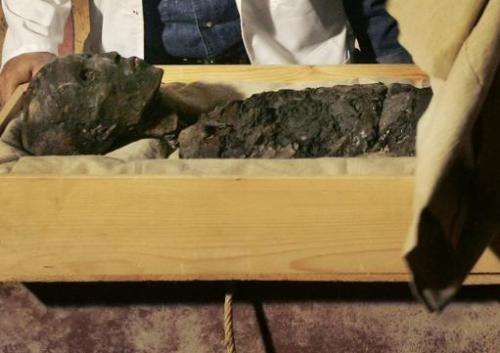Tutankhamun may have spontaneously combusted

Tutankhamun's body may have spontaneously combusted due to a botched mummification, British scientists claim in a new programme to be broadcast Sunday.
Egyptologist Chris Naunton and a team of forensic scientists performed a "virtual autopsy" on the young pharaoh in the Channel 4 television documentary "Tutankhamun: The Mystery of The Burnt Mummy".
The experts used x-ray and computerised tomography (CT) scanning data which showed a highly distinct pattern of injuries down one side of his body.
They also examined a fragment of the pharaoh's flesh.
They claimed chemical tests confirmed that the mummy was burnt whilst still sealed inside his coffin.
Fire investigators demonstrated how a chemical reaction of the embalming oils used on Tutankhamun's mummy led to his spontaneous combustion.
Naunton said the clues were in Carter's thousands of notes, a "treasure trove of archeological information", much of which had never been followed up.
"Despite all the attention Tut's mummy has received over the years the full extent of its strange condition has largely been overlooked," he said.
"The charring and possibility that a botched mummification led the body spontaneously combusting shortly after burial was entirely unexpected, something of a revelation in fact.
"What the project shows is that when it comes to ancient material there is always more to learn, and there probably will in the future, but with this study we have taken a big step forward in terms of understanding what happened at the end of Tut's life."
Tutankhamun died at about 19, after 10 years of rule between 1333 to 1324 BC. His nearly intact tomb, which included a gold coffin and mask, was discovered in 1922 by British pair Howard Carter and Lord George Carnarvon.
In 2010, DNA testing and CT scans revealed that he had very severe malaria and suffered from a club foot.
His mummy is on display in Luxor.
© 2013 AFP




















